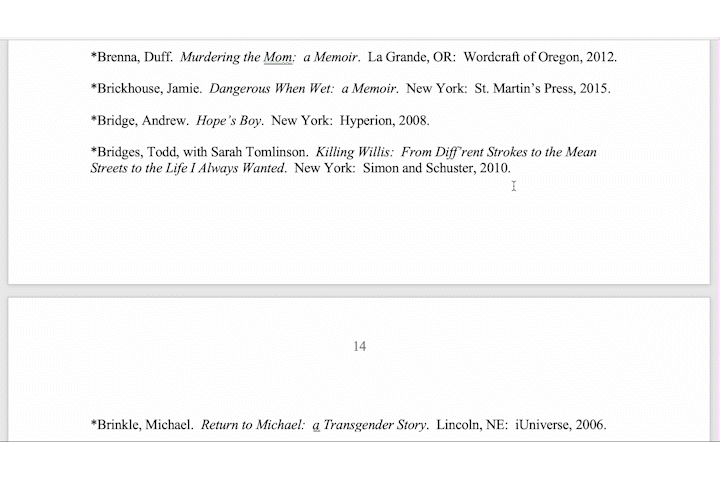Silent No More: Male Survivor Works on Childhood Sexual Abuse
An ongoing project of the Phoenix Foundation is the Corpus of Male Survivor Memoirs (CMSM), which seeks to assemble a research collection of all memoirs by male survivors of childhood sexual abuse worldwide, in all relevant languages. It also includes journals, diaries, compilations of letters, and interviews, poetry collections and plays by male survivors, as well as translations, anthologies and biographical works, academic studies, research aids, self-help guides, workbooks, and textbooks. As of summer 2025 the corpus consists of about 7000 items. Nearly 3000 of these are memoirs by male survivors, comprising about 95% of all known male survivor memoirs published worldwide.

Types of Memoirs
The memoirs are of two types. The majority are “recovery memoirs,” in the sense that the author’s primary theme, or one of his main themes, is sexual abuse in childhood, its impact on his life, and his experiences in recovery. It is in such memoirs that one will find detailed and nuanced information on such topics as grooming, cognitive distortions, disclosure, and impact later in the survivor’s life.
Other memoirs, classified as “survivor memoirs,” are included in the CMSM because their authors disclose sexual abuse in childhood, but do not pursue it as a major topic. Examples of this latter category would be:
- a memoir by a recovering alcoholic who reveals that he was sexually abused as a child but does not explore the subject;
- a musician whose account of his chaotic childhood includes incidents of sexual abuse, without pursuing the subject in further detail;
- numerous accounts in which the author discloses what is in fact sexual abuse by an older female, but which he regards as “getting lucky” or a landmark in his “coming of age,” and therefore does not perceive as harmful.
These works tend to “flatten” incidents of abuse and offer a more limited range of detail. And to the extent that they offer information on later difficulties in life, they are likely to miss the possibility that these problems are related to their sexual experiences in childhood.
Categories of Memoirs
The memoirs range over the various forms that sexual abuse of children takes, and thus fall into differing categories. So in addition to distinguishing between survivor and recovery memoirs, the CMSM divides them according to these categories of abuse:
- Abuse by Adolescents
- Abuse by Female Offenders (non-incest)
- Abuse in Medical Institutions (by physicians, in hospitals)
- Abuse by Service Institutions (non-Boy Scout)
- Abuse in Trafficking and Sex Rings
- Abuse in the Workplace
- Abuse in Residential Institutions (orphanages, foster care, detention centers)
- Acquaintance Abuse
- African American Survivors
- Boy Scout Survivors
- Clergy Abuse (Catholic Church)
- Clergy Abuse (other Christian denominations)
- First Nations/Native American Survivors
- Gay Survivors
- Hispanic Survivors
- Jewish Survivors (non-Holocaust)
- Maternal Incest (including stepmothers, grandmothers, and aunts)
- Paternal Incest (including stepfathers, grandfathers, and uncles)
- Sex Ring Survivors
- Sibling Incest (including step-siblings and cousins)
- Stranger Abuse
- Street Kids and Prostitution
- Teen Memoir Authors
- Young Adult Survivors (ages 18-early 20s)
As these categories are not mutually exclusive and it is not unusual for a child to be abused by multiple perpetrators, the CMSM involves extensive cross-referencing, with some memoirs appearing in several categories. Other categories may emerge as work proceeds.